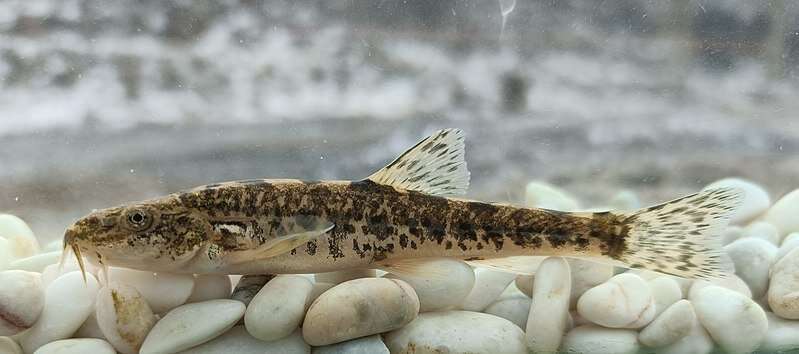This article has been reviewed according to Science X's editorial process and policies. Editors have highlighted the following attributes while ensuring the content's credibility:
fact-checked
peer-reviewed publication
trusted source
proofread
Researchers identify role of introgression during radiation of Triplophysa adapted to Tibetan Plateau

Adaptive radiation, a process in which many new species explode and occupy different ecological niches in a short time, can rapidly promote speciation and enrich species diversity. Genomic analyses have shown that phylogenies of closely related species often exhibit a high degree of reticulation, which is often associated with adaptive radiation.
Triplophysa is a genus of nemacheiline loaches (Family Cyprinidae), the most species-rich lineage of freshwater fishes in Asia. Previous studies based on morphological and biogeographic data have found that changes in geography and climate associated with the uplifting of the Tibetan Plateau were, through allopatric speciation, the driving forces behind the formation of the species diversity of Triplophysa fishes. This makes Triplophysa a typical material for exploring the adaptive radiation of species during the uplift of the Tibetan Plateau.
Recently, a research group led by Prof. He Shunping from the lnstitute of Hydrobiology (lHB) of the Chinese Academy Sciences used whole-genome sequences of 18 representative species spanning all major lineages of the radiation of Triplophysa to explore their phylogenetic relationships, and gained deeper insights into the evolutionary processes. This study was published in Molecular Biology and Evolution.
Based on the genome-wide single nucleotide variations (SNVs), the researchers estimated the comprehensive phylogenetic relationship of the genus Triplophysa. The results showed a typical reticular evolution, suggesting the occurrence of incomplete lineage sorting or interspecific gene flow events. The quantified signals of introgression through D-statistics and QuIBL showed the abundance of allele sharing across the clade of Triplophysa, confirming the widespread gene flow events between Triplophysa species.
Through coalescent simulation, the researchers inferred the speciation and migration events, and found evidence of an ancient gene flow event that occurred approximately 0.24~9.87 million years ago between T. tibetana and an ancestral clade of Triplophysa fishes.
To explore the molecular mechanism of Triplophysa adapting to the extreme environment of the plateau, the researchers compared and analyzed population genetic parameters such as nucleotide diversity, FST, recombination rate, and Fd value in the introgression region of the whole genome based on sliding windows. The results showed that genomic regions under introgression revealed a characteristic of lower recombination rates and nucleotide diversity which have similarities with regions under selection.
The study confirms that introgression poses certain challenges in clarifying the evolutionary relationships between Triplophysa species. The investigation of T. tibetana population history is useful for understanding changes in population dynamics. At a time when the habitat of the Triplophysa is increasingly fragmented, these endangered populations are in urgent need of conservation.
More information: Yuting Qian et al, The role of introgression during the radiation of endemic fishes adapted to living at extreme altitudes in the Tibetan Plateau, Molecular Biology and Evolution (2023). DOI: 10.1093/molbev/msad129
Journal information: Molecular Biology and Evolution
Provided by Chinese Academy of Sciences
















